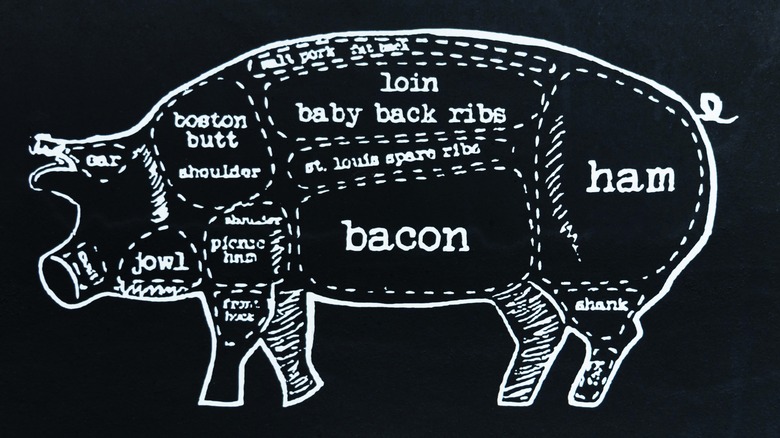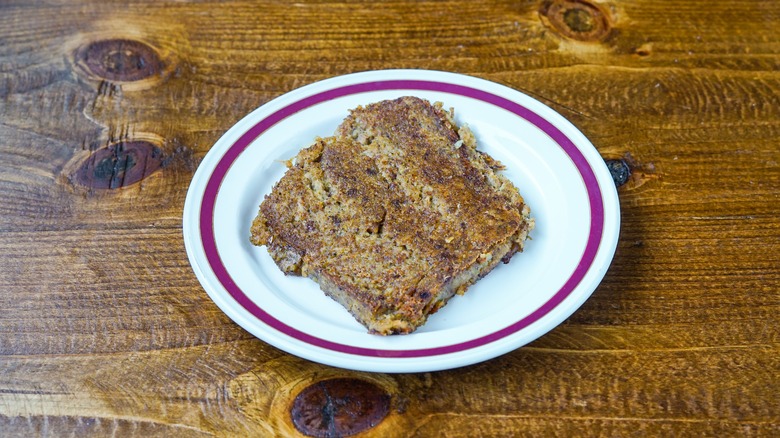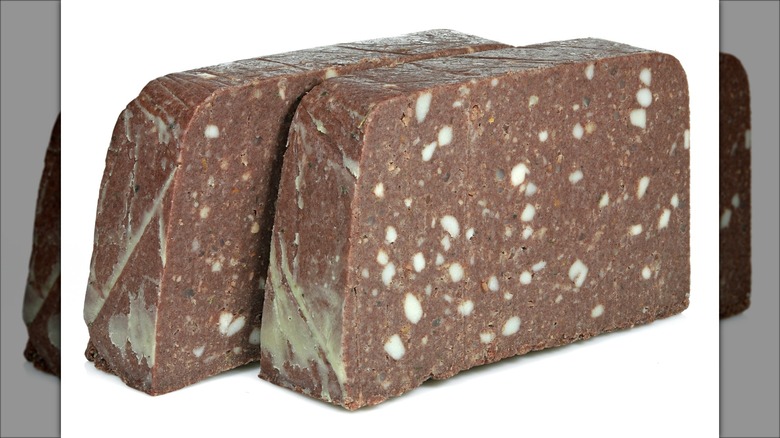Here's How Scrapple Might Have Gotten Its Name
Many parts of the world developed their distinct cuisine, which is deeply tied to their history, culture, and locally-sourced ingredients. The world can thank Japan for its invention of the comforting, ever-popular ramen noodle, while others can tip their hats off to the Austrians for inventing the Viennese croissant. Similarly, as stated in The Encyclopedia of Greater Philadelphia, the world can thank 18th-century and 19th-century German immigrants for bringing over scrapple.
A culinary conundrum, scrapple is made using a melange of meat scraps held together by a thickener like cornmeal or buckwheat, as explained in the Pennsylvania Center for the Book. Scrapple showed settlers in the area an ingenious way to turn meat scraps into a hearty dish, and to this day, it continues to be a source of pride for many Philadelphians. Everything about this dish is unique, from its taste to its preparation — and even the origin story surrounding its name.
What is scrapple?
For the uninitiated, scrapple is a meat-based loaf primarily made of meat scraps. The Pennsylvania Center for the Book explains that the meat scraps to make this regional dish consists of pork bits left from making sausages, hams, or chops. These parts include snouts, jowls, kidneys, and/or the liver. The scraps are then boiled, minced, seasoned with spices, and thickened with buckwheat (or cornmeal) flour. When a "mush" is produced, the scrapple mix can be poured into pans and left to cool. To enjoy scrapple, the cooled loaf is cut into slices and fried in a pan. (If you want an idea of what scrapple tastes like, the Food Network likens it to French paté or liverwurst.)
As stated above, The Encyclopedia of Greater Philadelphia notes that scrapple was introduced to the mainstream Philadelphia population by German immigrants in Pennsylvania. As scrapple was a thrifty way to use leftovers, it slowly gained commercial traction through the decades, and in the 1860s, the meat producer and brand Habbersett became the first to churn out scrapple en mass, per their website.
So how did scrapple get its name?
According to a blog post published on the site for the high-quality meat retail company S. Clyde Weaver, what we now know today as scrapple was not the same name used by the German immigrants who brought the delicacy over from their country of origin. Though it's widely debated, a number of people claim that the loaf's name actually comes from the German word panhaskröppe. This word is a product of two terms, panhaas and/or panaas, which translate to English as "pan rabbit" and "a slice of" respectively.
One explanation by The Pennsylvania Dutch Dictionary is that the original German dish was prepared by finely chopping meat scraps of roasted hare in a pan. When it gained traction in the U.S., English speakers formulated the name "scrapple", which was prepared using pork scraps, as stated in The Encyclopedia of Greater Philadelphia. The use of "scrap" in the name "scrapple" referred to the thrifty method of using edible, leftover parts of a pig. Whether you love scrapple or don't, there's one thing that's for sure — scrapple is a product of resourcefulness at its finest (and even the tastiest)!


